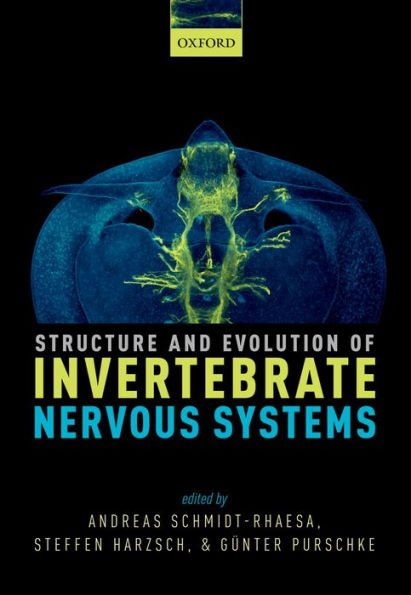The nervous system is particularly fascinating for many biologists because it controls animal characteristics such as movement, behavior, and coordinated thinking. Invertebrate neurobiology has traditionally been studied in specific model organisms, whilst knowledge of the broad diversity of nervous system architecture and its evolution among metazoan animals has received less attention. This is the first major reference work in the field for 50 years, bringing together many leading evolutionary neurobiologists to review the most recent research on the structure of invertebrate nervous systems and provide a comprehensive and authoritative overview for a new generation of researchers. Presented in full colour throughout, Structure and Evolution of Invertebrate Nervous Systems synthesizes and illustrates the numerous new findings that have been made possible with light and electron microscopy. These include the recent introduction of new molecular and optical techniques such as immunohistochemical staining of neuron-specific antigens and fluorescence in-situ-hybridization, combined with visualization by confocal laser scanning microscopy. New approaches to analysing the structure of the nervous system are also included such as micro-computational tomography, cryo-soft X-ray tomography, and various 3-D visualization techniques. The book follows a systematic and phylogenetic structure, covering a broad range of taxa, interspersed with chapters focusing on selected topics in nervous system functioning which are presented as research highlights and perspectives. This comprehensive reference work will be an essential companion for graduate students and researchers alike in the fields of metazoan neurobiology, morphology, zoology, phylogeny and evolution.
1122687354
Structure and Evolution of Invertebrate Nervous Systems
The nervous system is particularly fascinating for many biologists because it controls animal characteristics such as movement, behavior, and coordinated thinking. Invertebrate neurobiology has traditionally been studied in specific model organisms, whilst knowledge of the broad diversity of nervous system architecture and its evolution among metazoan animals has received less attention. This is the first major reference work in the field for 50 years, bringing together many leading evolutionary neurobiologists to review the most recent research on the structure of invertebrate nervous systems and provide a comprehensive and authoritative overview for a new generation of researchers. Presented in full colour throughout, Structure and Evolution of Invertebrate Nervous Systems synthesizes and illustrates the numerous new findings that have been made possible with light and electron microscopy. These include the recent introduction of new molecular and optical techniques such as immunohistochemical staining of neuron-specific antigens and fluorescence in-situ-hybridization, combined with visualization by confocal laser scanning microscopy. New approaches to analysing the structure of the nervous system are also included such as micro-computational tomography, cryo-soft X-ray tomography, and various 3-D visualization techniques. The book follows a systematic and phylogenetic structure, covering a broad range of taxa, interspersed with chapters focusing on selected topics in nervous system functioning which are presented as research highlights and perspectives. This comprehensive reference work will be an essential companion for graduate students and researchers alike in the fields of metazoan neurobiology, morphology, zoology, phylogeny and evolution.
206.99
In Stock
5
1

Structure and Evolution of Invertebrate Nervous Systems
776
Structure and Evolution of Invertebrate Nervous Systems
776Related collections and offers
206.99
In Stock

Product Details
| ISBN-13: | 9780191066214 |
|---|---|
| Publisher: | OUP Oxford |
| Publication date: | 12/17/2015 |
| Sold by: | Barnes & Noble |
| Format: | eBook |
| Pages: | 776 |
| File size: | 76 MB |
| Note: | This product may take a few minutes to download. |
About the Author
From the B&N Reads Blog
